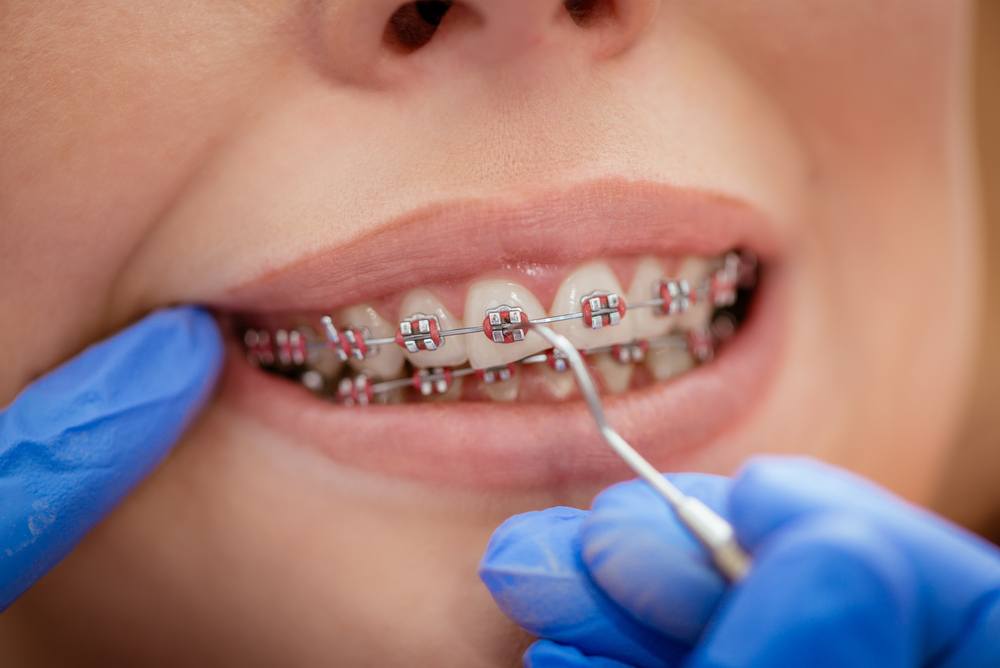Expert Cumming Braces and Aligners: What to Know Before You Check out
Expert Cumming Braces and Aligners: What to Know Before You Check out
Blog Article
Comprehensive Guide to Orthodontics Treatments for Remedying Oral Misalignments
In the world of orthodontics, the trip to achieving a completely lined up smile includes a myriad of treatments customized to fix oral imbalances. From traditional braces to invisible aligners and even surgical choices, the area of orthodontics offers a variety of services to attend to differing levels of oral irregularities. Understanding the intricacies of each procedure, including their systems, advantages, and possible downsides, is crucial in making notified decisions regarding one's orthodontic therapy. As we browse via the extensive overview to orthodontic treatments for dealing with oral misalignments, the complex information of each approach will certainly unravel, losing light on the course towards a harmonious and practical dental alignment.
Orthodontic Procedures Introduction

In enhancement to standard braces and clear aligners, orthodontists might likewise advise other treatments like headgear, palatal expanders, or retainers to attend to particular placement issues (cumming invisalign). These procedures are customized per client's one-of-a-kind requirements and might include a mix of therapies to attain the desired outcomes. Regular adjustments and monitoring are essential parts of orthodontic treatment to guarantee progress gets on track and to make any type of required alterations along the way. By undergoing orthodontic treatments, patients can not only achieve a straighter grin yet also improve their general dental wellness and feature.
Traditional Braces: How They Work
When considering orthodontic therapies for dental imbalances, typical braces stand apart as a time-tested approach for fixing teeth placing. Standard dental braces consist of braces, cables, and bands that interact to use constant stress on the teeth, progressively moving them right into the desired positioning. The brackets are affixed to the teeth using an unique adhesive, and the wires are threaded via the brackets. By changing the stress of the cables, orthodontists can regulate the instructions and force put on each tooth, directing them right into correct alignment over time.
As stress is applied to the teeth via the dental braces, the bone bordering the teeth is improved to sustain the brand-new tooth positions. Clients will need routine changes at the orthodontist's workplace to ensure the braces proceed to use the proper stress for reliable teeth motion.
Invisible Aligners: Advantages And Disadvantages
These clear, customized trays are practically invisible when worn, making them an attractive option for individuals looking for a much more cosmetically pleasing orthodontic therapy. Individuals can remove the aligners prior to consuming or cleaning their teeth, decreasing the threat of food obtaining stuck in the device and simplifying the cleansing process.

Surgical Orthodontic Options
Surgical interventions in orthodontics present sensible alternatives for resolving intricate oral imbalances that may not be successfully solved via standard orthodontic therapies. While standard braces and unnoticeable aligners can remedy lots of orthodontic problems, specific cases call for medical treatment to accomplish ideal results. Surgical orthodontic options are typically advised for extreme malocclusions, considerable jaw discrepancies, and cases where the underlying bone structure requires adjustment to achieve correct placement.
One typical surgical orthodontic treatment is orthognathic surgical treatment, which includes repositioning the jaws to deal with practical issues such as trouble eating or talking. This surgical treatment is typically carried out in collaboration with an orthodontist that helps straighten the teeth prior to and after the treatment. Surgical orthodontics might also entail procedures to reveal affected teeth, eliminate excess gum cells, or reshape the jawbone to develop a much more unified facial account.
Before taking into consideration medical orthodontic options, people undergo a thorough examination to determine the requirement and potential advantages of such interventions. cumming aligners. While surgical treatment might seem overwhelming, it can substantially boost both the function and aesthetics of the smile in situations where standard orthodontic treatments fall short
Retainers and Post-Treatment Treatment

Post-treatment treatment entails adhering to the orthodontist's instructions vigilantly. This might consist of correct oral hygiene practices, going to follow-up visits, and putting on the retainers as prescribed. Failure to adhere to post-treatment care guidelines can lead to relapse, where the teeth slowly relocate back in the direction of their original positions. Constant retainer wear, great oral hygiene, and regular oral examinations are vital for keeping the results attained via orthodontic surgical treatment and making certain the long-lasting stability of the corrected dental alignment.
Final Thought
To conclude, orthodontic procedures provide various alternatives for dealing with oral misalignments. Traditional dental braces use steel braces and wires to change teeth right into proper placement. Undetectable aligners supply a more discreet choice however may investigate this site not appropriate for all situations. Surgical orthodontic options are readily available for a lot more severe imbalances. Retainers are generally made use of post-treatment to maintain the brand-new positioning. On the whole, orthodontic procedures can effectively enhance dental wellness and visual appearance.
As we browse via the extensive overview to orthodontic procedures for fixing oral imbalances, the elaborate details of each method will unravel, losing light on the path towards a unified and functional oral alignment. - cumming orthodontics
One of the most common orthodontic treatments is the use of dental braces, which are composed of steel brackets and wires that use gentle pressure to slowly change teeth right into the desired position.When thinking about orthodontic therapies for oral misalignments, typical dental braces stand out as a time-tested method for fixing teeth placing. Furthermore, unseen aligners may not be suitable for complicated orthodontic problems that need even more significant teeth motion, as they are typically advised for moderate to modest situations. Retainers are personalized orthodontic devices designed to hold teeth in their fixed settings after the completion of orthodontic treatment.
Report this page